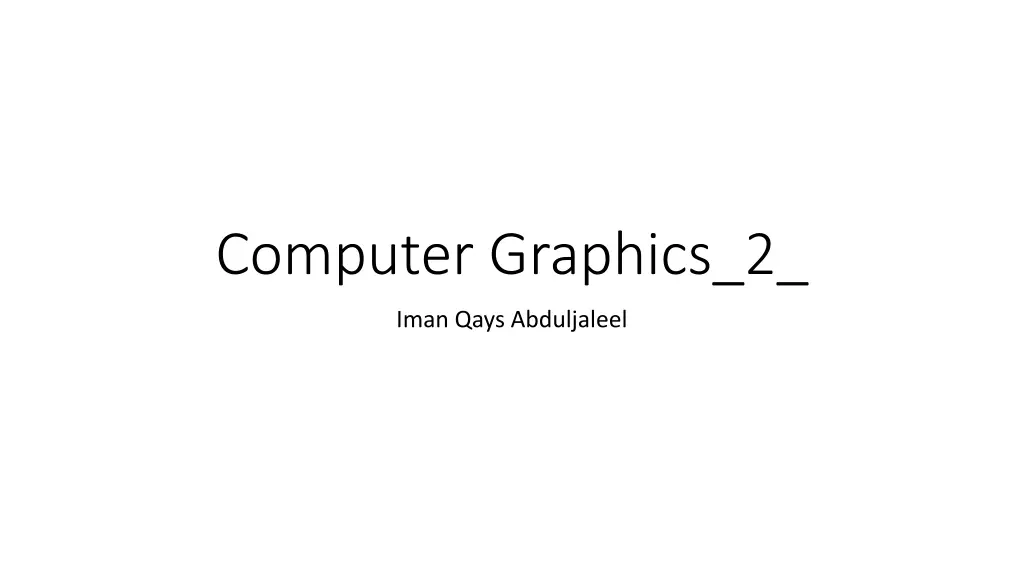
Understanding Graphics Systems and Model Elements in Computer Graphics
Explore the concepts of polylines, filled regions, and text in computer graphics. Learn about the properties and attributes that define graphical output and enhance visual representations. Dive into the intricacies of rendering and encoding graphical elements effectively.
Download Presentation

Please find below an Image/Link to download the presentation.
The content on the website is provided AS IS for your information and personal use only. It may not be sold, licensed, or shared on other websites without obtaining consent from the author. If you encounter any issues during the download, it is possible that the publisher has removed the file from their server.
You are allowed to download the files provided on this website for personal or commercial use, subject to the condition that they are used lawfully. All files are the property of their respective owners.
The content on the website is provided AS IS for your information and personal use only. It may not be sold, licensed, or shared on other websites without obtaining consent from the author.
E N D
Presentation Transcript
Computer Graphics_2_ Iman Qays Abduljaleel
Graphics Systems and Model Elements of Pictures: 1. Polylines: A polyline (or more properly a polygonal curve is a finite sequence of line segments joined end to end). These line segments are called edges, and the endpoints of the line segments are called vertices. A single line segment is a special case. (An infinite line, which stretches to infinity on both sides, is not usually considered to be a polyline.) A polyline is closed if it ends where it starts. It is simple if it does not self-intersect. Self-intersections include such things as two edge crossing one another, a vertex intersecting in the interior of an edge, or more than two edges sharing a common vertex. A simple, closed polyline is also called a simple polygon. If all its internal angle are at most 180 , then it is a convex polygon. A polyline in the plane can be represented simply as a sequence of the (x, y) coordinates of its vertices. This is sufficient to encode the geometry of a polyline. In contrast, the way in which the polyline is rendered is determined by a set of properties call graphical attributes. These include elements such as color, line width, and line style (solid, dotted, dashed), how consecutive segments are joined (rounded, mitered or beveled; see the book for further explanation).
Graphics Systems and Model 2- Filled regions: Any simple, closed polyline in the plane defines a region consisting of an inside and outside. (This is a typical example of an utterly obvious fact from topology that is notoriously hard to prove. It is called the Jordan Curve Theorem.) We can fill any such region with a color or repeating pattern. In some instances the bounding polyline itself is also drawn and others the polyline is not drawn. A polyline with embedded holes also naturally defines a region that can be filled. In fact this can be generalized by nesting holes within holes (alternating color with the background color). Even if a polyline is not simple, it is possible to generalize the notion of interior. Given any point, shoot a ray to infinity. If it crosses the boundary an odd number of times it is colored. If it crosses an even number of times, then it is given the background color.
Graphics Systems and Model 3- Text: Although we do not normally think of text as a graphical output, it occurs frequently within graphical images such as engineering diagrams. Text can be thought of as a sequence of characters in some font. As with polylines there are numerous attributes which affect how the text appears. This includes the font s face (Times-Roman, Helvetica, Courier, for example), its weight (normal, bold, light), its style or slant (normal, italic, oblique, for example), its size, which is usually measured in points, a printer s unit of measure equal to 1/72-inch), and its color.
